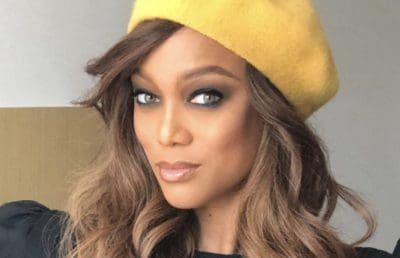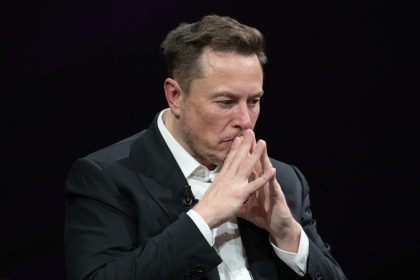
Deavra Daughtry
Founder, Texas Women’s Empowerment Foundation
What were your goals for expansion to South Africa?
To empower and educate the people of Africa using South Africa as a gateway and launchpad into the African continent.
What would you suggest for people consider expanding into South Africa?
Define your business plan for accessing global markets. An international business plan is important in order to define your company’s
present status and internal goals and commitment, but it’s also necessary if you plan to measure your results.
Determine how much you can afford to invest in your international expansion efforts. Will it be based on ten percent of your domestic business profits or on a pay-as-you-can-afford process?
Plan at least a two-year lead-time for world market penetration. It takes time and patience to build a great, enduring global enterprise, so
be patient and plan for the long haul.
Pick a product or service to take overseas. You can’t be all things to all people. Decide on something. Then stick with it.
Conduct market research to identify your prime target markets. You want to find out where in the world your product will be in greatest
demand. Market research is a powerful tool for exploring and identifying the fastest-growing, most penetrable market for your product.
Make personal contact with your new targets, armed with culture-specific information and courtesies, professionalism and
consistency. Your goal should be to enter a different culture, adapt to it and make it your own.
What is the mission of your organization in South Africa?
Leadership development
Business consulting
How did the South Africans receive your brand?
They felt empowered by the work that we have done help economic development.
Describe three of the challenges facing South African women:
Poverty
All but two of the 30 poorest countries in the world are in Africa. Rural women are greatly affected by poverty. Men often travel to
industrial areas to work while women keep the rural economy running. They are subsistence farmers and they sell produce in markets. Thirty-three percent of people in Sub-Saharan Africa are malnourished. African women usually live without electricity, telephones or modern plumbing. When drought or floods ruin crops the women have no source of food unless they receive intermittent food aid.
HIV/Aids
According to the HIV/AIDS awareness and charity organization, Avert, 59 percent of those living with HIV are female. There is a gender
element to the illness in African. Lack of awareness or partner unwillingness to use protection endanger women. Statistics on the number of younger women contracting the illness show that in the 15-to-24-age group, 75 percent of those with HIV/AIDS are women. Often HIV-positive women or those widowed by HIV/AIDS lose their homes due to stigmatization in the community. Pregnant and nursing women with HIV/AIDS lack access to drugs to prevent passing it to their infants.
Education
Two-thirds of the 40 million African children who do not attend school are girls. Only 60 percent of girls go to primary school. The
majority, 53.2 percent, of African women are illiterate. In some countries, such as Mozambique, the illiteracy rate among women is double that of men. Many families can afford to send only one or two children to school. Often boys are sent instead of girls.
What are the benefits of global expansion?
Being able to increase the number of potential consumers of your products and the people you serve.
What health services are needed in South Africa?
This two-tiered system is not only inequitable and inaccessible to a large portion of South Africans, but institutions in the public sector have suffered poor management, underfunding and deteriorating infrastructure. While access has improved, the quality of health care has fallen. The situation is compounded by public health challenges, including the burden of diseases such as HIV and tuberculosis (TB), and a shortage of key medical personnel.
Travel tips to South Africa
South Africa fast facts
Languages
South Africa is a multilingual country and there are 11 official languages:
English, Afrikaans, isiNdebele, isiXhosa, isiZulu, Sepedi,
Sesotho, Setswana, Siswati, Tshivenda and Xitsonga. Composed by Enoch
Sontonga in 1899, the Xhosa hymn ‘Nkosi Sikelel’ iAfrika is South Africa’s
national anthem
* Airports
The three major international airports in South Africa are: OR Tambo
International Airport (Johannesburg), Cape Town International Airport and
King Shaka International Airport (Durban) as well as 90 regional airports
including the Kruger Mpumalanga International Airport (KMIA) in Nelspruit.
* Provinces
There are nine provinces in South Africa, namely: Eastern Cape, Free State,
Western Cape, KwaZulu-Natal; Gauteng, North West, Northern Cape, Limpopo and
Mpumalanga
* Capitals
South Africa has three capitals: Cape Town (legislative), Pretoria (administrative and Bloemfontein (judicial).
* Political system
A well-known fact about South Africa is that since 1994 we have enjoyed
democratic government, the apartheid policies of the past overthrown. Our
constitution is regarded as an example to the world, and enshrines a wide
scope of human rights protected by an independent judiciary. The country is
headed by President Jacob Zuma, of the African National Congress.
* Tourism
Since the demise of apartheid, international tourist arrivals have surged,
making tourism one of the fastest growing sectors. The tourism industry is
well-established with an exciting sector of emerging entrepreneurs. The
country is strong on adventure, sport, nature and wildlife travel and is a
pioneer and global leader in responsible tourism.
* Currency
South Africa’s currency is the rand, which offers visitors great value for
money. The rand comes in a range of coins (R1 = 100 cents) and note
denominations of R10, R50, R100
Two spiritual inspirations from traveling to Africa:
Being in the motherland and having a feeling of being closest to your
roots.
Great reminder to embrace every moment of life.
Two of the best South African memories:
The visit to Robben Island (Mandela’s prison cell), Soweto, Apartheid Museum
and Table mountain
Safari in the Kruger Park and Sun City
Three reasons for others to travel to your conference in South Africa?
– Exposure to South African business opportunities.
– Connection with South African business community.
– Networking with government leaders.
Books you read while traveling:
Nelson Mandela’s biography, Long Walk to Freedom
The Architect of Poverty by Moeletsi Mbeki
The People Factor by Van Moody
Myths that are not true about South Africa:
That South Africa is characterized by crime and violence.
Three South African travel destinations you really enjoyed?
-Capetown
-Soweto – Johannesburg
-Sun City and The Kruger Park safaris

















